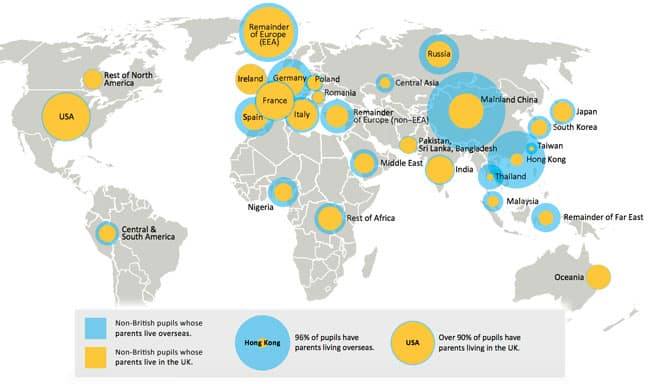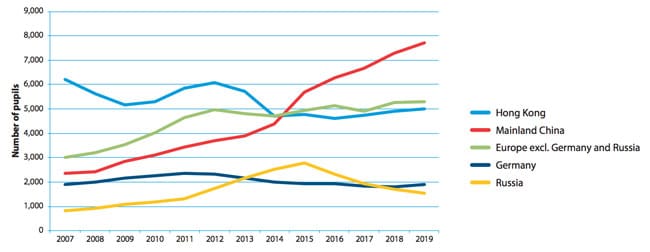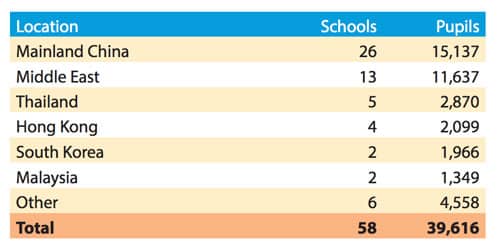One third of foreign students in British independent schools come from Europe
reveals that the total number of international students in British Independent K-12 schools grew by just under 3% this year. The 1,364 ISC member schools report a total foreign enrolment of 55,280 as of January 2019. Just over half (52%, or 28,910 students) were enrolled while their parents were still overseas. The remaining 26,370 were enrolled with their parents also in the UK.
China (including Hong Kong) remains by far the leading sending market for the former group – those with parents overseas – and accounted for 43% of all enrolments this year. The European Economic Area (EEA) accounts for a similar percentage (45%) of the 26,370 students with parents in the UK – a proportion which actually grew 3% year-over-year.


Overseas growth
While year-over-year foreign enrolment growth in British independent schools remains fairly marginal, student numbers are expanding more quickly among the growing number of overseas campuses operated by ISC members.
ISC reports a total of 58 overseas campuses this year with a combined enrolment of nearly 40,000 students. This compares to 47 campuses and 32,000 students only a year ago.
As the following table highlights, most of these offshore schools are based in Mainland China or the Middle East, with the remainder largely found in East and Southeast Asia.

Most Recent
-
ICEF Podcast: Engine of growth: The true value and impact of the international education sector Read More
-
Global higher education enrolments expected to grow through 2035, but new challenges must be addressed Read More
-
Canada: A case study of immigration policy impacts on postsecondary institutions and the wider economy Read More
















